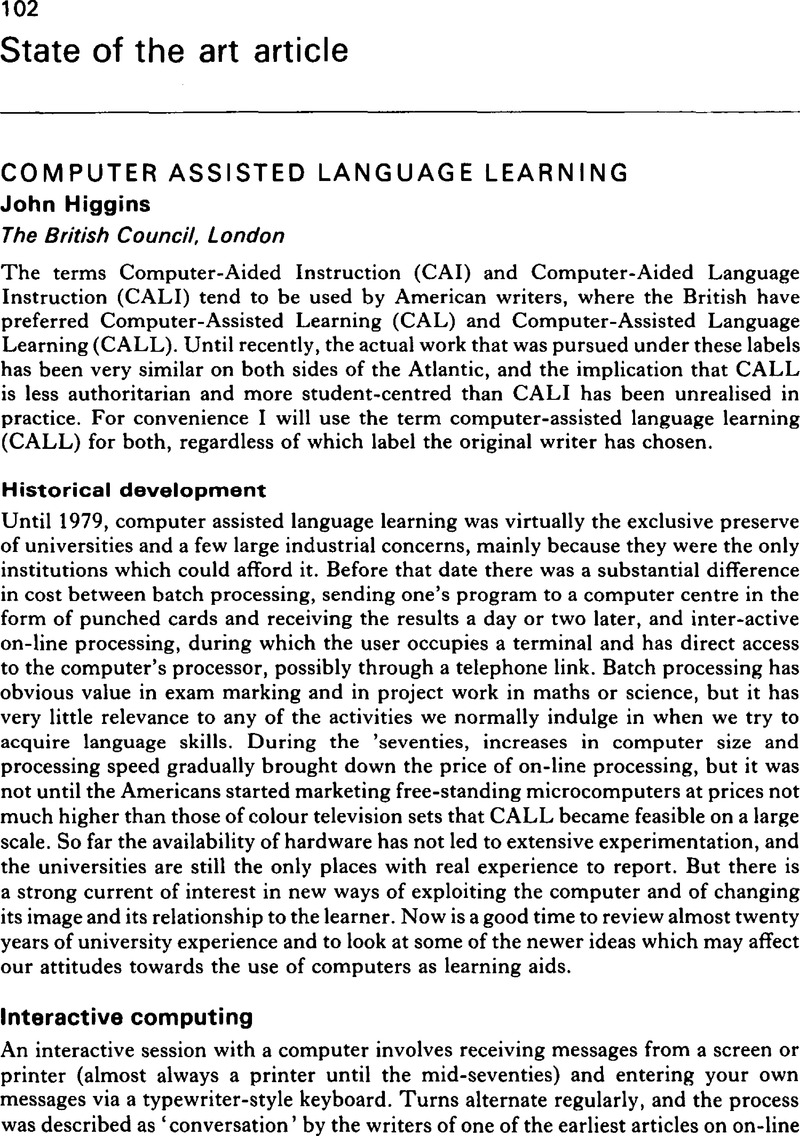Crossref Citations
This article has been cited by the following publications. This list is generated based on data provided by Crossref.
Raschio, Richard A.
1986.
Communicative Uses of the Computer: Ideas and Directions.
Foreign Language Annals,
Vol. 19,
Issue. 6,
p.
507.
Phillips, Martin
1987.
Potential paradigms and possible problems for CALL.
System,
Vol. 15,
Issue. 3,
p.
275.
Papp, Ferenc
1987.
The use of computers in teaching foreign languages: Research in Hungary.
Prospects,
Vol. 17,
Issue. 4,
p.
587.
Kenning, Marie-Madeleine
1990.
Computer-assisted language learning.
Language Teaching,
Vol. 23,
Issue. 2,
p.
67.
Reinhardt, Jonathon
2017.
The Handbook of Technology and Second Language Teaching and Learning.
p.
202.
Godiš, Tomáš
and
Pšenáková, Ildikó
2020.
Kommunikationsmittel und Medien im Fremdsprachenunterricht.
Valodu apguve: problēmas un perspektīva : zinātnisko rakstu krājums = Language Acquisition: Problems and Perspective : conference proceedings,
p.
265.
Sukor, Siti Sarah
and
Ali, Zuraina
2020.
Smartphone applications for young English language learners.
Journal of Physics: Conference Series,
Vol. 1529,
Issue. 5,
p.
052079.
Mammadova, Tamilla
2022.
Academic Writing and Information Literacy Instruction in Digital Environments.
p.
17.
Zheng, Yanwen
and
Tse, Alex W. C.
2023.
The Influence of Creating and Sharing English Video on Social Media Platform on the Willingness to Communicate in English of Chinese Sophomore Majoring in English: a Case Study.
p.
183.
Almusharraf, Norah
and
Alotaibi, Hind
2023.
An error-analysis study from an EFL writing context: Human and Automated Essay Scoring Approaches.
Technology, Knowledge and Learning,
Vol. 28,
Issue. 3,
p.
1015.
Quan, Zhi
and
Zhang, Yueyi
2024.
Encyclopedia of Information Science and Technology, Sixth Edition.
p.
1.





